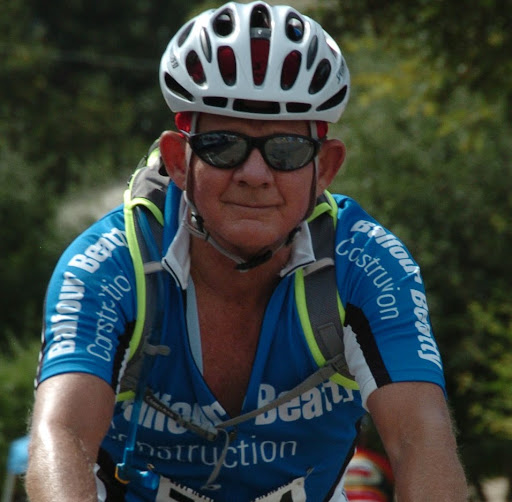Donald Wayne Hanson
age ~35
from Gresham, OR
- Also known as:
-
- Donald W Hanson
- Donald W Potts
- Donsld Hanson
Donald Hanson Phones & Addresses
- Gresham, OR
- Napa, CA
- Vallejo, CA
Work
-
Company:Northeast baptist church
-
Address:6701 Ne Prescott St, Portland, OR 97218
-
Phones:5032817656
-
Position:Religious leader
-
Industries:Religious Organizations
Resumes

Software Development Manager At Mcafee Inc
view sourceLocation:
Portland, Oregon Area
Industry:
Computer Software

Donald Hanson
view source
Donald Hanson
view source
Donald Hanson
view source
Donald Hanson
view sourceLocation:
United States

Donald Hanson
view sourceLocation:
United States
Lawyers & Attorneys

Donald Hanson - Lawyer
view sourceSpecialties:
Insurance
ISLN:
915419287
Admitted:
1997
University:
Southern Methodist University, B.A., 1987
Law School:
Drake University School of Law, J.D., 1997

Donald Hanson - Lawyer
view sourceISLN:
906710867
Admitted:
1967
University:
University of Illinois, B.A., 1963
Law School:
John Marshall Law School, LL.B., 1966
License Records
Donald J Hanson
License #:
MBR1667 - Active
Category:
Barber Examiners
Issued Date:
Aug 10, 1964
Expiration Date:
Dec 31, 2017
Type:
Registered Barber
Isbn (Books And Publications)

From Kingdom to Commonwealth the Development of Civic Consciousness in English Politic
view sourceAuthor
Donald Hanson
ISBN #
0674324757
Name / Title
Company / Classification
Phones & Addresses
Religious Leader
Northeast Baptist Church
Religious Organizations
Religious Organizations
6701 Ne Prescott St, Portland, OR 97218
TOWNE SQUARE ARTS, LLC
Vice President, Director
OTAK, INC
Professional, Scientific and Techincal Servies · Architectural, Engineering and Related Services · Engineering Services Landscape Services Architectural Services · Landscape Services Architectural Services Engineering Services Surveying Services Mgmt Consulting Svcs · Engineering Services · Nonclassifiable Establishments · Engineering Svcs
Professional, Scientific and Techincal Servies · Architectural, Engineering and Related Services · Engineering Services Landscape Services Architectural Services · Landscape Services Architectural Services Engineering Services Surveying Services Mgmt Consulting Svcs · Engineering Services · Nonclassifiable Establishments · Engineering Svcs
17355 SW Boones Fry Rd, Lake Oswego, OR 97035
808 SW 3 Ave STE 300, Portland, OR 97204
PO Box 1379, Lake Oswego, OR 97035
National Registered Agents, Charleston, WV 25321
5036353618, 4805576670, 5032876825, 5032745445
808 SW 3 Ave STE 300, Portland, OR 97204
PO Box 1379, Lake Oswego, OR 97035
National Registered Agents, Charleston, WV 25321
5036353618, 4805576670, 5032876825, 5032745445
General Partner
FPC 63 COMPANY, A LIMITED PARTNERSHIP
General Partner
LPC 37 COMPANY, A LIMITED PARTNERSHIP
C&C CONCRETE AND CARPENTRY LLC
DILLINGER'S SWEEPSTAKES CLUB LLC
President
NORTH BAY BONSAI CLUB
207 Martin St, Vallejo, CA 94589
Us Patents
-
Electrostatic Precipitation Process
view source -
US Patent:40724778, Feb 7, 1978
-
Filed:Mar 21, 1975
-
Appl. No.:5/560980
-
Inventors:Donald N. Hanson - Orinda CA
Charles R. Wilke - El Cerrito CA -
Assignee:The Regents of the University of California - Berkeley CA
-
International Classification:B03C 301
-
US Classification:55 10
-
Abstract:An electrostatic precipitator which operates on the principle of mutual repulsion of charged particles to a grounded wall. The solid particle laden gas stream enters a collecting section where additional particles in the form of droplets, normally water, are injected in the form of a fine spray into the solid particle laden gas stream. The solid particles and the additional particles are electrostatically charged either by conventional corona or by injecting the droplets from a charged nozzle and as the charged particles pass through the grounded section of the precipitator, a fraction of the water particles and solids are forced to the grounded wall by electric fields created by the space charge. Precipitated solid particles are entrained in the coalesced water which runs down the walls and is drained from the precipitator. Several stages of precipitation may be used or alternatively, methods such as continuously injecting additional particles into the collector along its length.
-
Method Of Crystallizing Salts From Aqueous Solutions
view source -
US Patent:48790427, Nov 7, 1989
-
Filed:Feb 23, 1988
-
Appl. No.:7/159372
-
Inventors:Donald N. Hanson - Orinda CA
Scott Lynn - Walnut Creek CA -
International Classification:B01D 1104
-
US Classification:210642
-
Abstract:Method of crystallizing from aqueous solution an inorganic solute, whose solubility in water varies relatively litter with temperature such that crystallizing by adjustment of temperature results in low yield, such method comprising contacting a concentrated aqueous solution of the solute with a hydrophilic organic solvent at a temperature T. sub. 1, T. sub. 1 and the organic solvent being selected such that at T. sub. 1 a water-rich phase is formed in which the ratio of solute to water is less than the ratio found in the incoming aqueous solution, resulting in formation of crystals of solute. The resulting wet, organic-rich phase is separated and dried by contact with a concentrated aqueous solution of the solute at T. sub. 2. T. sub. 2 differs from T. sub. 1, preferably being less than T. sub.
-
Method Of Concentrating Aqueous Solutions
view source -
US Patent:44302274, Feb 7, 1984
-
Filed:Aug 18, 1980
-
Appl. No.:6/178870
-
Inventors:Donald N. Hanson - Orinda CA
Scott Lynn - Walnut Creek CA -
Assignee:The Regents of the University of California - Berkeley CA
-
International Classification:B01D 1104
-
US Classification:210642
-
Abstract:Method of concentrating aqueous solutions of non-volatile, ionic solutes by extracting water from the solution by means of a polar organic liquid (or a solution of a polar organic liquid and a non-polar organic liquid) at an elevated temperature and cooling the organic liquid to separate a water phase, the extractant and the temperatures being chosen such that water has a relatively high solubility in the extractant at the higher temperature and a relatively low solubility at the lower temperature; the extractant being also chosen to meet certain other criteria such as inertness toward the solution and equipment. Advantage is taken of the diminished activity coefficient of water in polar organic liquids at elevated temperatures and in the case of certain solutions, advantage is also taken of the increased activity coefficient of water in aqueous ionic solution at elevated temperatures.
-
Method Of Treating Aqueous Solutions
view source -
US Patent:46327606, Dec 30, 1986
-
Filed:Sep 11, 1985
-
Appl. No.:6/774953
-
Inventors:Donald N. Hanson - Orinda CA
Scott Lynn - Walnut Creek CA -
International Classification:B01D 1104
-
US Classification:210642
-
Abstract:Method of treating an aqueous solution of a non-volatile inorganic solute to produce a more concentrated solution or to crystallize solid solute from the solution. The solution is contacted at a higher temperature T. sub. 1 with a suitable organic liquid to extract water and form an organic phase (organic liquid contacting water). The organic phase, separated, cooled and contacted at a lower temperature T. sub. 2 with a drying medium to dry the organic liquid which is then re-used to treat a further quantity of aqueous solution. The drying medium may be a portion of the concentrated aqueous solution resulting from the first step, or it may be a concentrated aqueous solution or a slurry from an outside source, or it may be a combination of two such drying media.
Myspace
Youtube
Plaxo

Donald Hanson
view sourceNew YorkGlobal Manager, Banking Solution Sales, SWG at IBM

Donald Lee Hanson
view sourceRetired

Hanson, Donald, Sr
view sourceKent, WARegional Operations Manager at Johnson Controls In...

Donald J. Hanson
view sourceNorristown, PAPresident at Yoh Talent Solution

donald hanson
view sourcehanson and co associates
Classmates

Donald Hanson
view sourceSchools:
Clearview Avenue Elementary School St. Petersburg FL 1953-1960, Lealman Junior High School St. Petersburg FL 1960-1963
Community:
Pamela Peters, James Weaver, Chris Allison

Donald Mark Hanson
view sourceSchools:
Gulfport East High School Gulfport MS 1973-1977
Community:
Robert Mathews, Marilynne Murray, Janet Moffett

Donald Hanson
view sourceSchools:
Boyle High School Boyle MS 1970-1971
Community:
Thomas Sumrall, Kirk Haney, Tom Whiston

Donald Hanson
view sourceSchools:
Grand Rapids High School Grand Rapids MN 1959-1963
Community:
Debbie Landey

Donald Meikle (Hanson)
view sourceSchools:
Upton High School Upton WY 1961-1963
Community:
Hunter Patrick, Thomas Sullivan, Loretta Barritt, Stephen Scott

Donald Hanson
view sourceSchools:
Clover High School Clover SC 1981-1985
Community:
Cathy Greene, Randy Herron

Donald Hanson
view sourceSchools:
Rio Lindo Adventist Academy Healdsburg CA 1977-1981
Community:
Roberta Maxwell, Joann Hunter, Catherine Berry, Valerie Miller, Elizabeth Day, Terry Hartwig

Donald Hanson
view sourceSchools:
Brown Military Academy Glendora CA 1960-1962
Community:
Amanda Sainburg, Victor Ornelas
Googleplus

Donald Hanson
Education:
San Francisco State University - Visual Communication Design
About:
Composing daily experiments in audiovisual human interaction.
Bragging Rights:
Analog synthesizer owner.

Donald Hanson
Work:
Master Lock - Tool and die (2006)

Donald Hanson

Donald Hanson

Donald Hanson

Donald Hanson

Donald Hanson

Donald Hanson
Flickr
Get Report for Donald Wayne Hanson from Gresham, OR, age ~35














